
TJ L’Heureux

Audio By Carbonatix
Last Wednesday, hundreds assembled in the small Arizona town of Window Rock to celebrate and honor the Navajo code talkers who helped the U.S. turn the tide in World War II. But the morning of the event, no one was sure if any of the three living Navajo code talkers was going to make an appearance.
Not only did Peter MacDonald show, the nearly 97-year-old was the show. Born Hashkasilt Begay, MacDonald took the stage just before noon in this town near the New Mexico border. MacDonald served 14 years as the Navajo Nation tribal chair, and the crowd hung on every word he had to say.
MacDonald educated, he preached, he spoke with authority. His voice boomed into the microphone like rolling thunder. He held the crowd enraptured as he told about the 29 young Navajo men who created and used a highly guarded code language during the war. The code substituted Navajo words, such as “hill” for “a sick horse.” Not even Navajo people – who refer to themselves as Diné – would have understood it. The code was never deciphered by the Japanese.
But for quite some time after the war, those war heroes had to remain silent about their legendary, top secret deeds. If anyone asked, MacDonald said, the men were supposed to say they were simply “radio men.”
Will you step up to support New Times this year?
At New Times, we’re small and scrappy — and we make the most of every dollar from our supporters. Right now, we’re $17,250 away from reaching our December 31 goal of $30,000. If you’ve ever learned something new, stayed informed, or felt more connected because of New Times, now’s the time to give back.
“Sure enough, when we got home, our parents asked us, ‘What did you do?’ Ah, we were just radio men. Nothing more. Don’t ask me any questions,” MacDonald said to raucous, joyful laughter.
“We read the newspaper; we listen to the radio. Nothing. Two years? Nothing. Five years? Nothing,” MacDonald continued. “We finally just thought, forget it. We were just radio men, that’s all.”
In 1968, 23 years after the war ended, the Navajo code was declassified – and the truth finally emerged. In 1982, President Ronald Reagan declared Aug. 14 as Navajo Code Talkers Day.
The code had remained a secret for so long in part because of the dedicated silence of the code talkers but also because of the genius of its devising. By the end of the war, the code comprised more than 600 words.
“If the enemy shoots you, they search. And they see the code, they’ll crack the code,” MacDonald said. “So every code that we used was subject to memory only – and we had good memory.”
It was highly successful. At the bloody, critical battle of Iwo Jima, famous for the iconic image of American troops holding up a flag atop a mountain, six Navajo code talkers transmitted more than 800 messages without making an error.
Ironically, the language that became essential for victory was one Americans had tried to exterminate. Navajo children, like other indigenous kids, were rounded up and put in boarding schools. If they spoke anything but English, they were punished.
“They’d slap us and get a big bar of real bitter soap, and they stick it in your mouth. And they’d make you kneel down with your hands up in the air, and they’d put pencils underneath your knees,” said Leslie Nelson Sr., a Navajo veteran. “So when I got to the Marine Corps, it was easy.”
But MacDonald and his friends “never quit talking Navajo when nobody is listening,” he said.
Phoenix New Times was on hand in Window Rock to commemorate Navajo Code Talkers Day. Here are photos from the festivities.
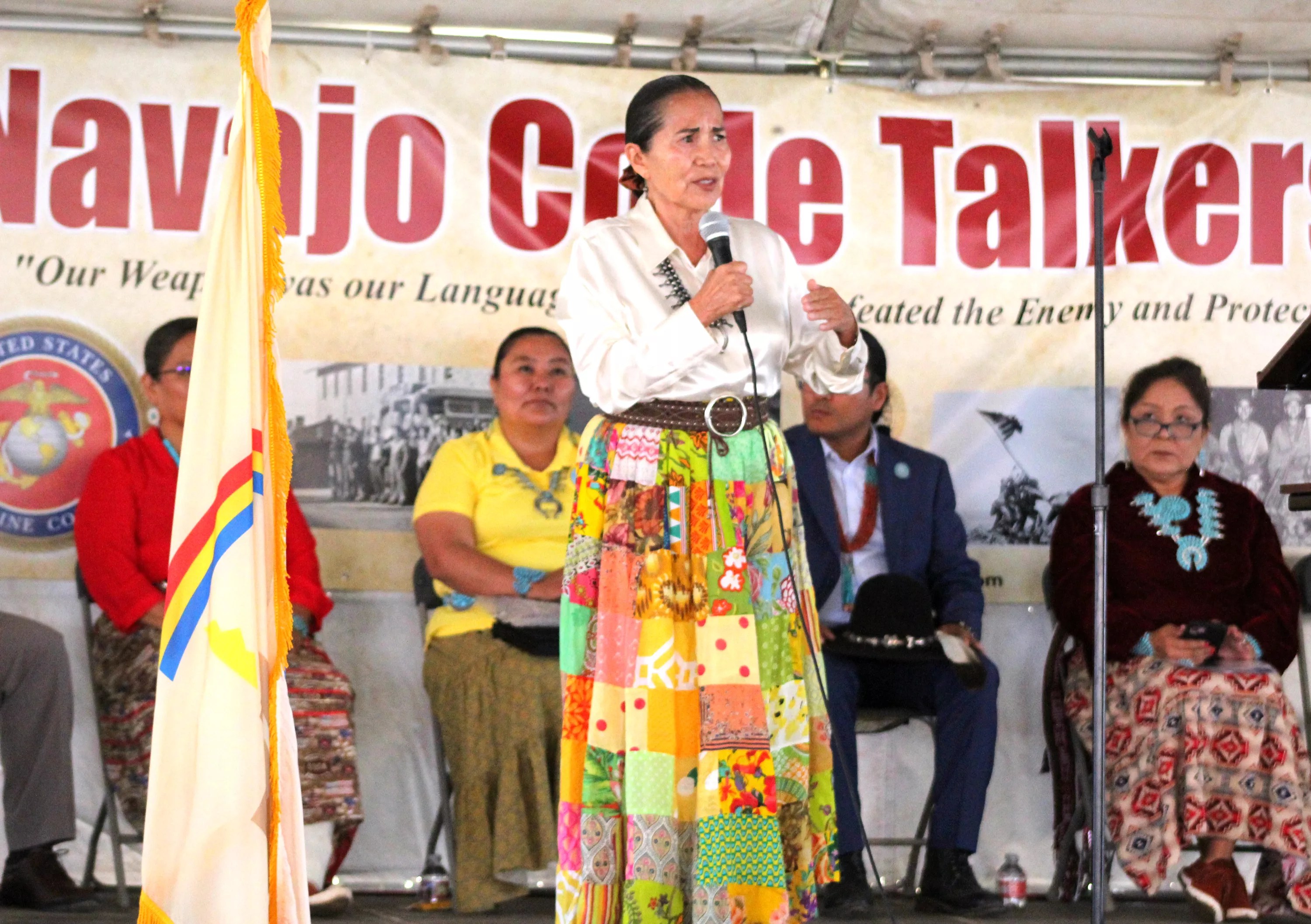
Navajo Nation Supreme Court Chief Justice JoAnn Jayne speaks to the crowd.
TJ L’Heureux
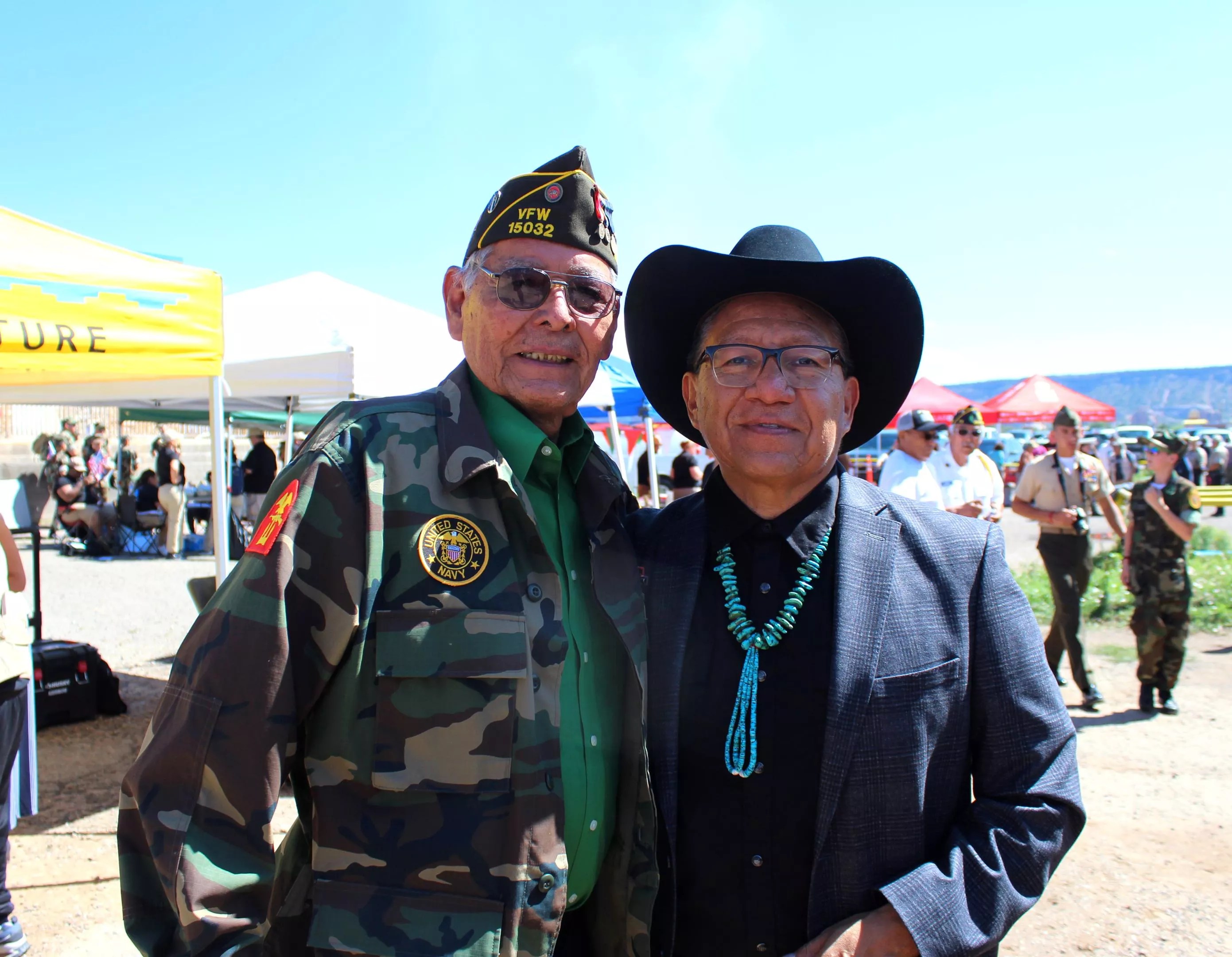
Navy veteran Nelson Betoney and former vice president of the Navajo Nation Myron Lizer
TJ L’Heureux
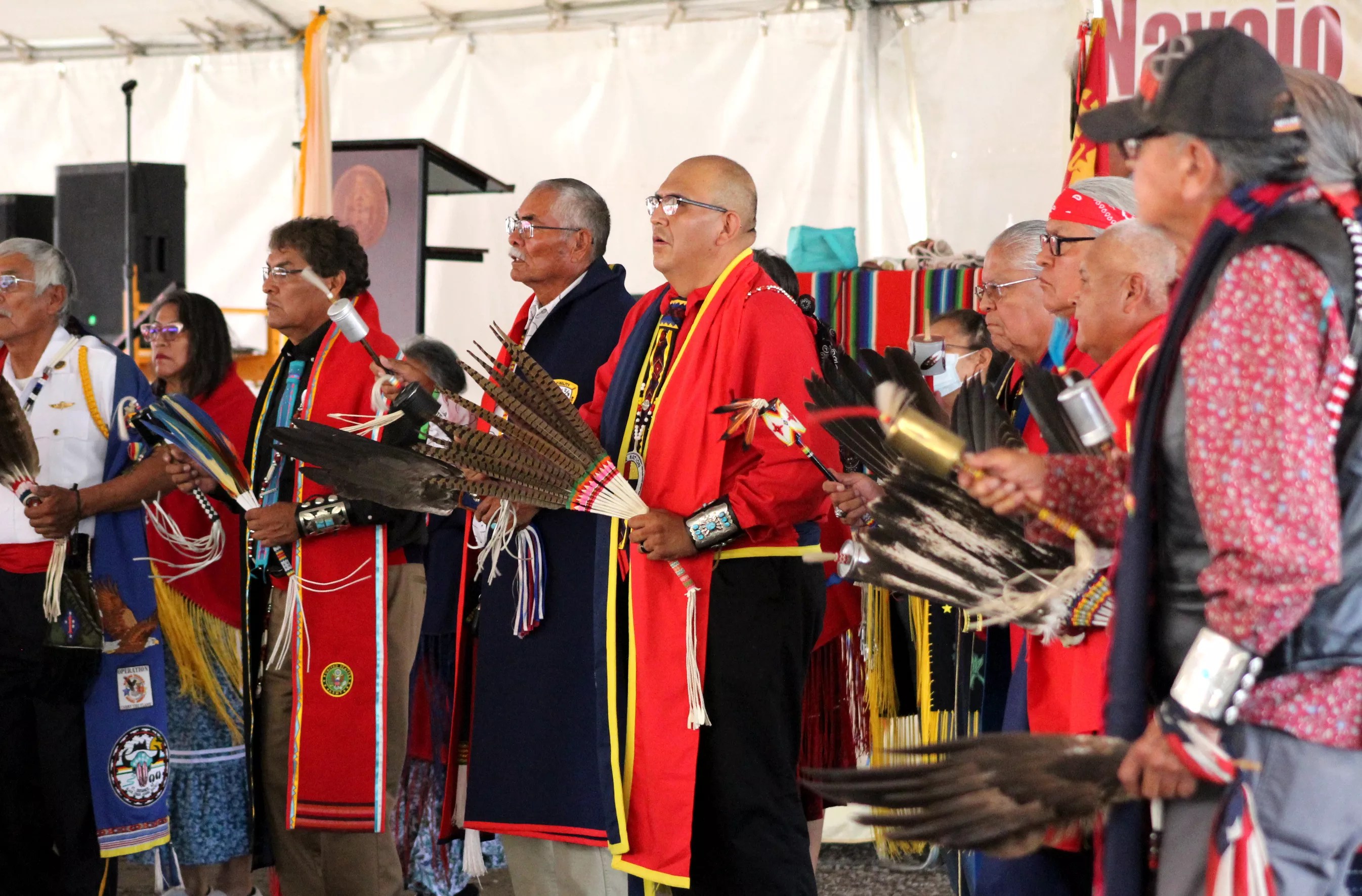
Communal song and dance
TJ L’Heureux
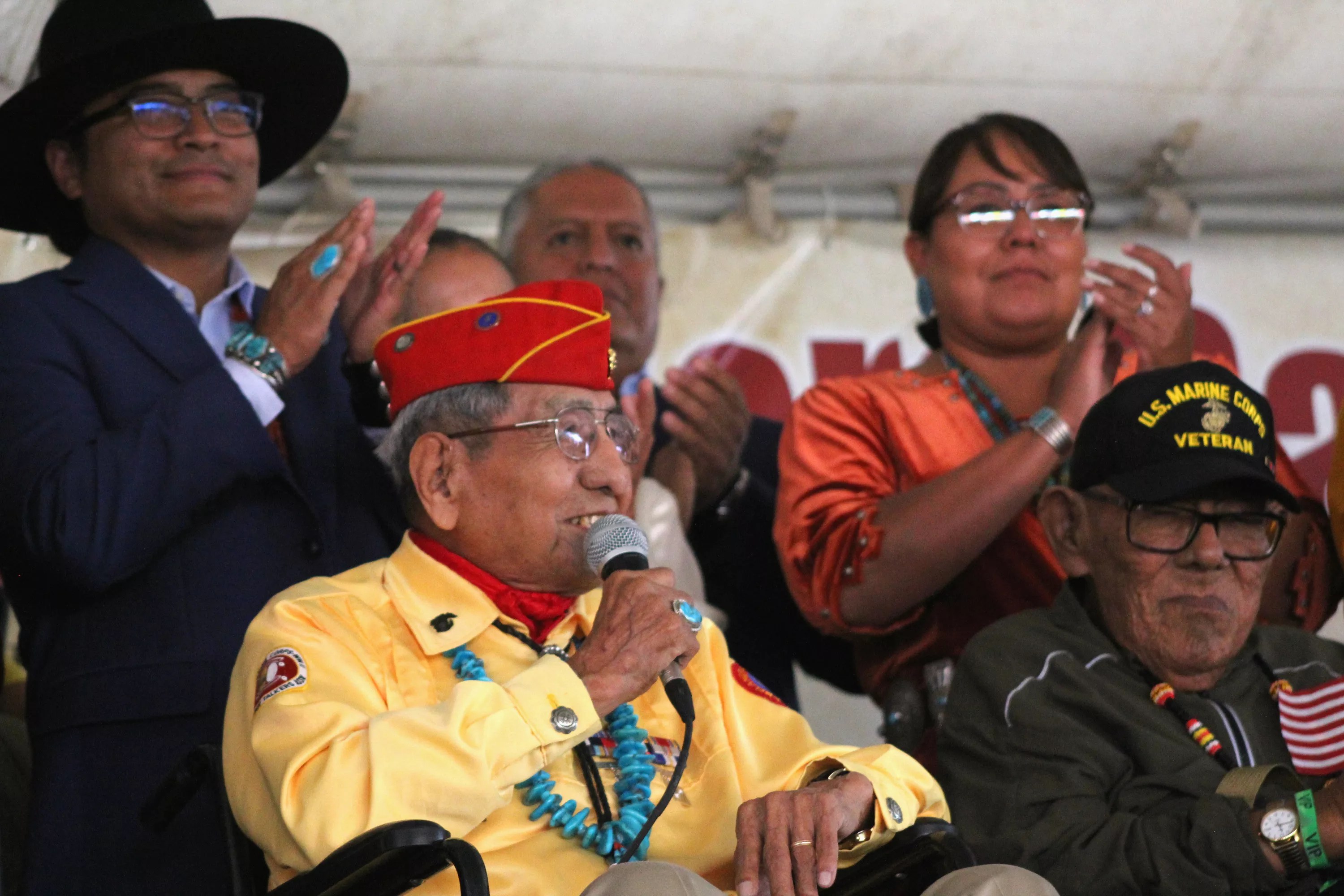
Peter MacDonald told the crowd how he grew up defiantly keeping his knowledge of the Navajo language alive with friends while they attended an American boarding school.
TJ L’Heureux
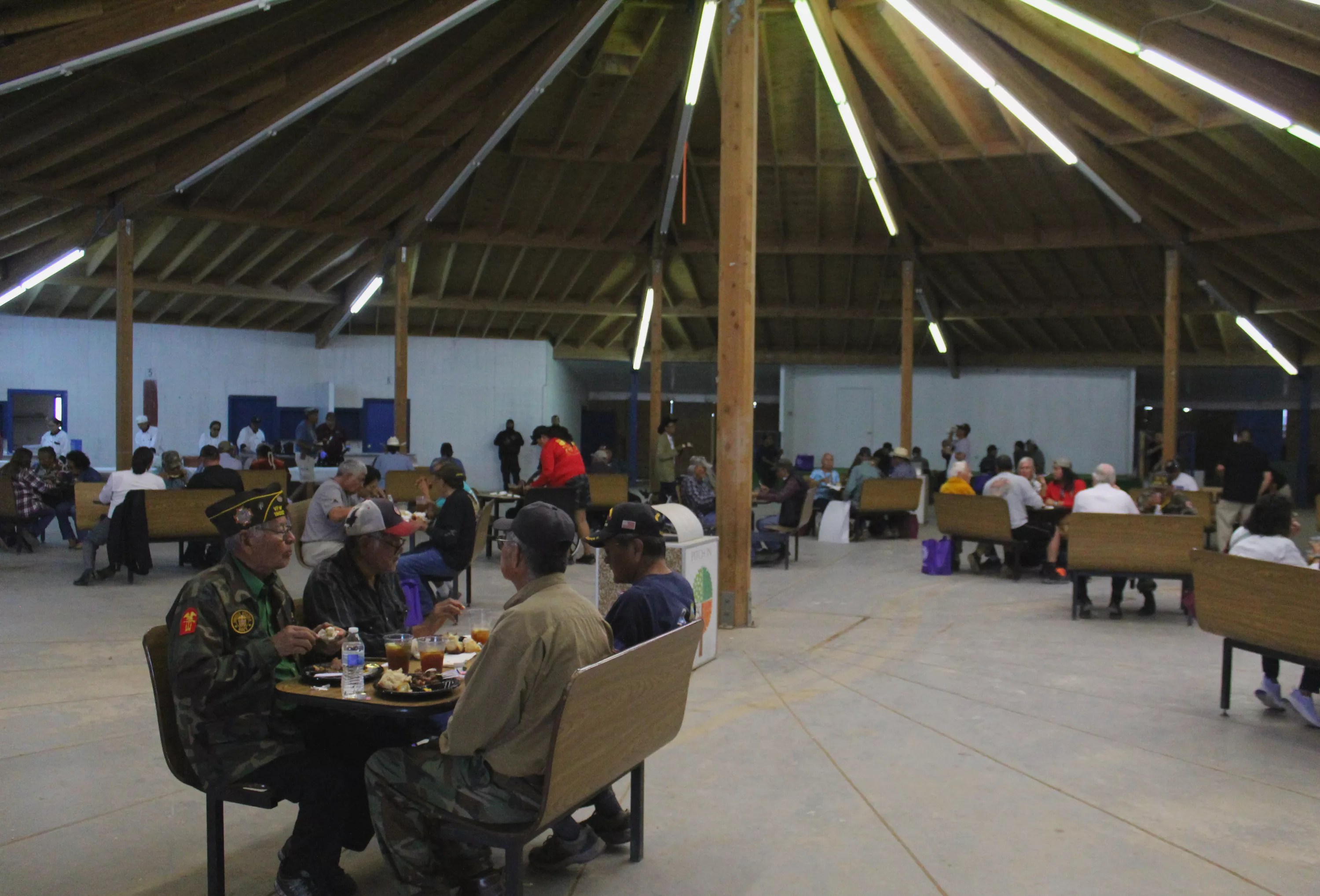
Veterans enjoy lunch from the Gallup, New Mexico, restaurant Earl’s.
TJ L’Heureux

President Dr. Buu Nygren of the Navajo Nation speaks on Navajo Code Talkers Day.
TJ L’Heureux

Leslie Nelson Sr. with his wife, Etta. Nelson served in the U.S. Marine Corps during the U.S. war in Vietnam. He sold posters he made that highlight the irony of the government’s use of Navajo language during World War II.
TJ L’Heureux

“Think for the future” is the slogan of Navajo Nation President Dr. Buu Nygren’s administration.
TJ L’Heureux

Cassandra Morgan works at Navajo nonprofit Diné Naazbaa Partnership. The community-based program connects veterans with resources to which they’re entitled.
TJ L’Heureux

Hundreds listened to speeches, and even more roamed the Navajo Nation Fairgrounds and checked out the booths of organizations, vendors and proud descendants of code talkers.
TJ L’Heureux

Cheryl Davis stands by a poster that highlights the life of her code talker stepfather, John C. Sells. Sells served in the U.S. Marine Corps.
TJ L’Heureux

A sunny day in Window Rock
TJ L’Heureux